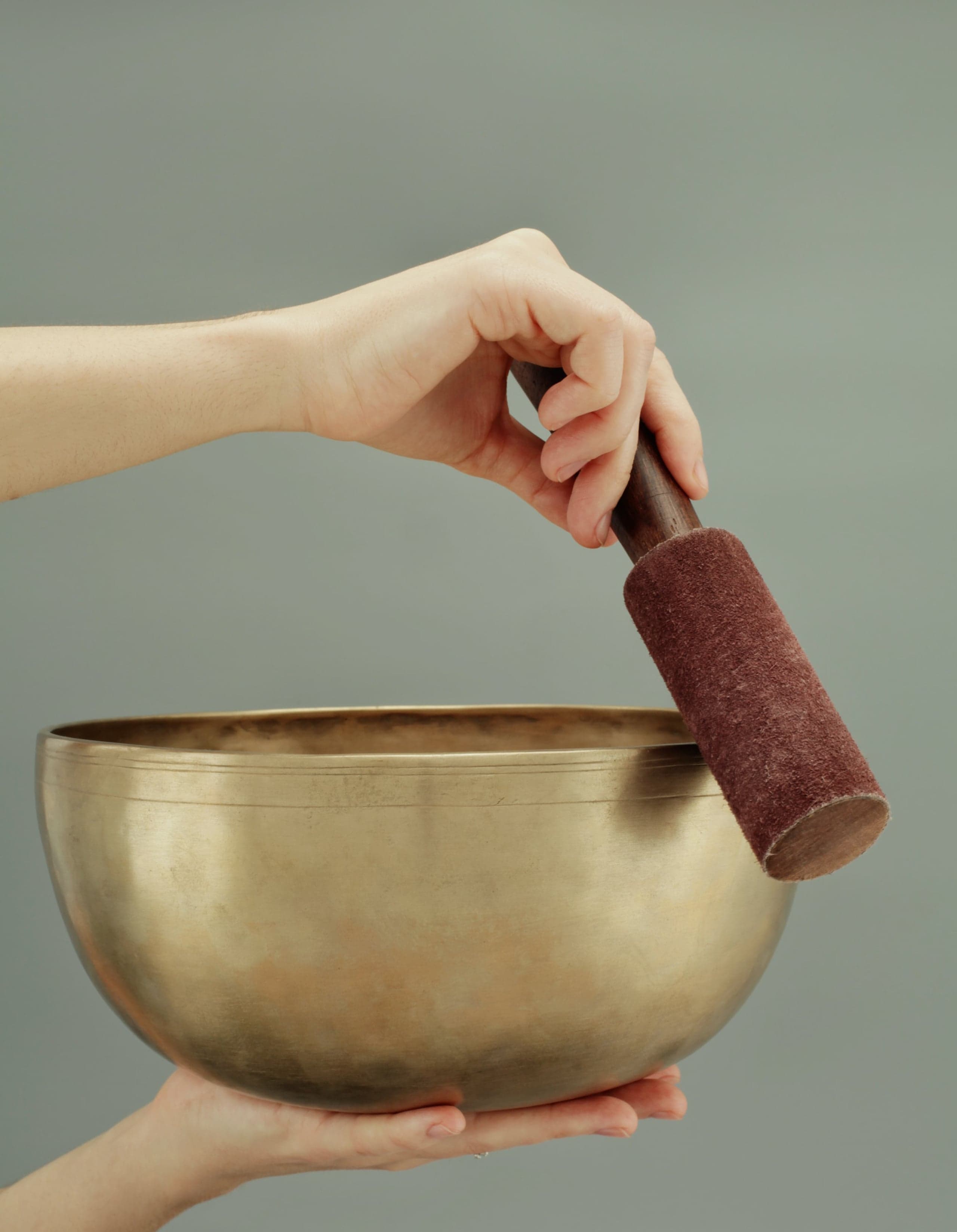Everything you need to know about sound healing — Kendall Jenner’s favourite wellness practice

After a not-so-long hiatus, the Kardashians and their new show (aptly named The Kardashians) return to our screens today. And with them, invariably returns tabloid-fodder, spats, celeb cameos — and wellness trends. Sure, Kourtney may have Poosh, but one unexpected member of the clan who has been dabbling in more unusual practices is Kendall Jenner. The supermodel, who has been open about her struggles with anxiety, was last year seen practising a ritual called sound healing.
The age-old practice, which involves an expert utilising therapeutic instruments like Himalayan singing bowls, gongs, tuning forks and drums, is known to provide numerous psychological and physiological benefits. It’s seen a resurgence in popularity recently, which is something that sound healing practitioner Farzana, aka The Sound Therapist, finds unsurprising. “Sometimes we use the term ‘woo woo’ to just describe something that we don’t yet understand. Sound therapy is actually a very ancient modality, our ancestors were doing it,” she explains. “It might sound like a new trend now, but actually if you listen to the lapping waves of the ocean, which is universally calming, that’s nature’s form of sound healing.”
“Because we’ve had a difficult two years, we’re all looking for a way to disconnect, and sound healing is one of the easiest ways you can do so, because you don’t actively have to do something, like learning a new skill. That’s where a huge amount of the appeal is — you just need to get comfy and someone else is doing all the hard work, but it’s you that feels better at the end.” Consider us sold.
Here, Farzana breaks down everything you need to know about the practice.

What is sound therapy?
“Sound therapy is a holistic treatment that uses therapeutic grade instruments to change your brainwave state,” says the practitioner. “By activating your parasympathetic nervous system, it’s moving you from being in a really alert place of stress or concentration into a more relaxed and rested brainwave space.” This has a range of benefits, from reducing anxiety and signs of depression to even lowering your blood pressure.
“One of the best things about sound therapy is that you don’t need to do any prep, you just need to turn up — your brain is doing the work,” she continues. “Many of us don’t realise how heightened our state of awareness is. So, sound baths give you the time to recalibrate, rest, and decompress, and that’s where all the psychological and physiological recovery happens. You need to be in a restful state for your body to repair and assess what’s going on for the next time you might be faced with a situation that you need to react to.”
Who is it helpful for?
Sound healing can be a positive experience for nearly everyone, but it’s especially helpful for those who are dealing with stress, have a difficult working life or have struggled with traditional forms of medicine. “You may be someone who doesn’t even realise that you are carrying any anxiety — in which case it could be an incredibly positive experience for you,” she says. “It’s helpful for people who may not necessarily want to go to a psychotherapist to talk about their issues too. Sound healing here can help people identify the root cause of something without them having to talk about it.”
Farzana adds that it’s also great for those who are seeking clarity on a particular situation: “When you have a tidy mind, an answer you’re seeking will likely come to you.”
Is there anyone who shouldn’t practice sound healing?
Farzana says that she would not recommend sound therapy for people who get sound-induced seizures or those who are bipolar and not being medicated. “If you’re having a one-to-one session, your practitioner will ask about your mental health, and if you’ve got a condition such as the ones I’ve mentioned you will have to have a really detailed conversation. But on the whole, if you’re dealing with anxiety or mild depression then it can absolutely help with that.”
What does a typical sound bath session look like?
In a group session, you lie down or get seated comfortably, and will be given a blanket as your temperature will drop when you’re in deep meditation. A practitioner may then lead you through some easy breathwork, before playing the therapeutic grade instruments, which could be shakers, chimes, Himalayan singing bowls, or drums. This sound, Farzana says, differs from regular music because it’s not following a particular rhythm and is deconstructed. Towards the end of a session, you will hear shakers and chimes that are slightly higher-pitched, to ground you and bring you back into the present.
What could you expect to feel after a session?
“While everything I’ve said about sound therapy has to do with feeling rested and relaxed, it can also stir up emotions. So, everyone’s reaction after a sound bath is very unique, and it’s normally exactly what they may have needed at that time,” the expert tells us. “Some people will come out and feel drowsy and tired, others could feel quite emotional because they’ve experienced a release, and some could leave feeling revitalised and ready to go.”

